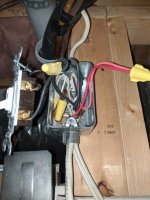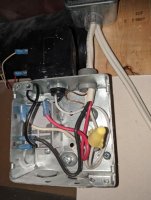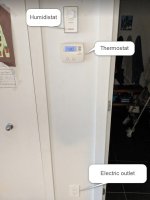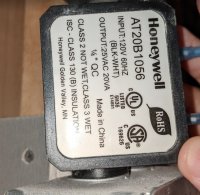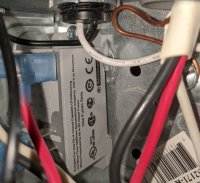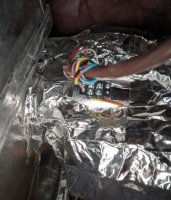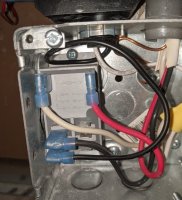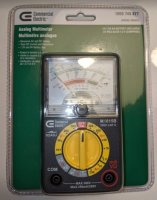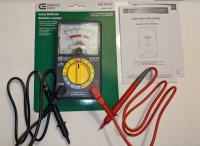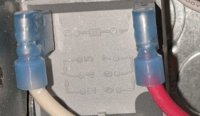This reminds me that every time I turn on the humidistat, I can hear a clicking sound on the other side of the ceiling. I checked again in the ceiling where the clicking sound comes from, I see there is a switch marked as "Furnace" and below the switch there is a junction box marked as "Relay shutter". It is that "Relay shutter" junction box that was making the clicking sound when humidifier turns on and off.
On the Furnace switch, there is one cable (I think it is a 3-conductor) feed-in from top, looks like the power-in. There are two cables going out (I think that is the direction), one 2-conductor goes into the bottom of the Furnace unit. the other 3-conductor connects to the Relay Shutter junction box.
There are two wires going out from the Relay Shutter, one red and one white that are part of a brown cable. Cannot see where the brown cable goes. Not sure if it connects to the humidifier unit somewhere in the ceiling?
By the way, a separate topic. I think I maybe wrong when I say the Furnace/AC unit, it could be just the Furnace. We have a cooling fan unit for A/C on the roof top.
Whether we can figure it out or not, I do very appreciate your patient and time spent already walking me through this wiring maze.
Cheers,
Wen
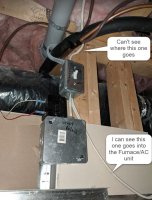
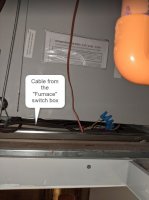

On the Furnace switch, there is one cable (I think it is a 3-conductor) feed-in from top, looks like the power-in. There are two cables going out (I think that is the direction), one 2-conductor goes into the bottom of the Furnace unit. the other 3-conductor connects to the Relay Shutter junction box.
There are two wires going out from the Relay Shutter, one red and one white that are part of a brown cable. Cannot see where the brown cable goes. Not sure if it connects to the humidifier unit somewhere in the ceiling?
By the way, a separate topic. I think I maybe wrong when I say the Furnace/AC unit, it could be just the Furnace. We have a cooling fan unit for A/C on the roof top.
Whether we can figure it out or not, I do very appreciate your patient and time spent already walking me through this wiring maze.
Cheers,
Wen




